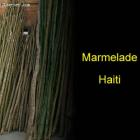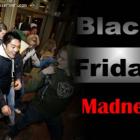Does Haiti have better Mardi Gras Costumes
ADVERTISEMENT
In the beginning, Mardi Gras masks used to allow people of the lower classes to mix undetected with aristocrats, however, in 1837, when the first organized parade came to the streets, the tradition of masking was banned as the disguised bandits started acts of robbery and violence behind their covered faces. The popular practices of Mardi Gras costume include wearing masks, capuchons, and costumes, overturning social conventions, drinking alcohol, dancing, begging, whipping, feasting, etc. Most of the traditional Mardi Gras costumes have been originated in the early rural France during the same celebration.
Those costumes not only conceal the identity, allow them to parody or mimicry the authority figures in the society. In the early days, the women in Acadiana ((official name given to the French Louisiana region) used to make costumes for their men to "Courir de Mardi Gras" (or Fat Tuesday run). On Mardi Gras day, these masked men would go from farm to farm knocking on doors, dancing, singing, and asking for rice, chickens and whatever was necessary to make a gumbo (a stew or soup of meat or shellfish and vegetables, that originated in southern Louisiana during the 18th century). Haitian costumes for the celebration have many observable features and symbolic meanings.
Read more: Kanaval, Entertainment
« Carnival celebration in Haiti and other Countries | Main | Can Haiti Carnival be compared Carnival in Rio? »
Leave a Reply
Name (required) E-mail (required, will not be published)
» »
Our objective is to share with you news and information about Haiti and the people of Haiti. Traditions, habits and the way we were or grew are alive in this site. We highly recommend that you Subscribe to our Newsletter and also share with us some of the things that are memorable and made us unique people.


 Haitians are a Proud People
Haitians are a Proud People  Marmelade, Haiti
Marmelade, Haiti  Saint Michel de L 'Atalaye
Saint Michel de L 'Atalaye  Black Friday Shopping Season
Black Friday Shopping Season  Haitian Creole Translation
Haitian Creole Translation